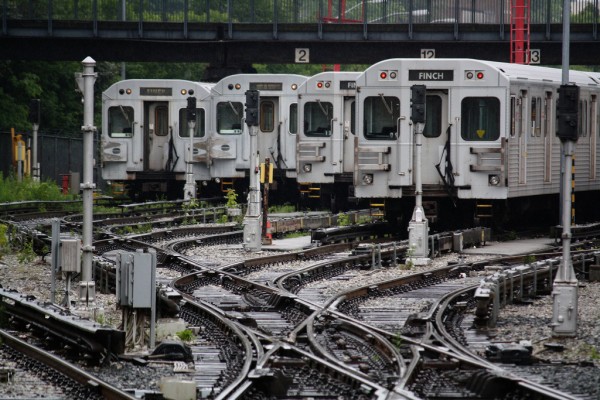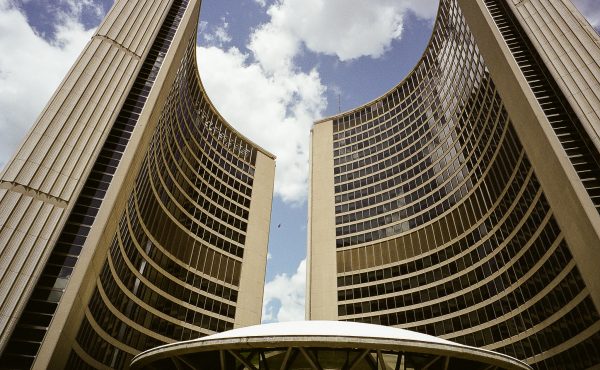One of the enduring features of Toronto’s so-called transit debate is the uneven and treacherous information terrain that ordinary citizens are forced to navigate if they aspire to crazy goals, such as trying to make sense of the endlessly shape-shifting discussion about competing options.
Almost two years after city council voted to commit itself to the $3.5 billion Scarborough subway extension despite a shameful dearth of even cursory analysis, the City continues to crash along with that doomed scheme. While the City is readying itself for a bevy of environmental assessment (EA) reports on that line, there’s still nothing in the public domain by way of rigorous land-use analysis of the proposed routes, any sort of financial due diligence, or even ridership projections that weren’t plucked out of thin air. The City hasn’t released any kind of granular analysis about the projected cost, even as that other train wreck — the York-Spadina subway extension — continues to deliver stunning cost over-runs.
Then yesterday, as if to counterbalance the information vacuum on one big project, the City executes an impressive data dump with the other one — in this case, Smart Track — or Son of Smart Track — or whatever we’re now calling this project that is meant to carry the full freight of John Tory’s political legacy.
The data arrived in the form of a detailed usage scenario analysis done by the University of Toronto’s Transportation Research Institute, which is headed up by civil engineering expert Eric Miller, a renowned authority on trip modeling.
Miller’s group used an elaborate forecasting model, built and updated over many years, to estimate the ridership on various Smart Track permutations by using a range of long-term economic and land-use development assumptions that run from stagnation to hyper-growth. Miller’s scenarios tested various pricing options — TTC rates vs. more costly GO fares — as well as various service levels, with trains running at head times ranging from 5 to 15 minutes.
The study includes forecasts like this: if Toronto’s population rises slowly but the region experiences mid-range employment growth, and the Smart Track corridor (heavy rail to Eglinton, and then an LRT from Mt. Dennis over to the Mississauga Airport Corporate Centre, all running at five-minute intervals) itself attracts new development, then daily boardings, circa 2031, will be in the vicinity of 336,702, which represents almost 55,000 new riders on the TTC every day. Follow?
Miller’s report included a range of less rosy permutations, but City officials, the mayor, and of course the news media have glommed on to the most optimistic scenarios, despite overwhelming evidence that optimistic scenarios tend not to be a sound basis for transit planning.
What’s more, his super-detailed evaluation raises as many questions as it purports to answer, largely because all that forecast data is decontextualized (that’s not Miller’s fault; the blame lies with the City, whose planners and politicians refuse to deliver complete analyses, preferring instead to subject the public to a drip-feed of teasers that render decision-making that much more bewildering). Consider:
- The report mentions the Scarborough subway extension exactly once, in a footnote on page one, where we are told that the forecasts account for all major improvements to the system. But that’s absurd on its face because the City hasn’t completed a rigorous analysis of the Scarborough subway extension’s ridership projections. It’s folly, as many others have noted, to believe the two lines won’t feed off one another: as the maps in yesterday’s briefing show, from Danforth to Sheppard East, they’ll operate in parallel corridors separated by scarcely more than a few kilometres.
- Within 15 years (2031), the sunniest projected daily ridership on the revised version of Smart Track will be almost half the daily ridership on the Yonge-Univerity-Spadina subway. Think about that for a moment. What the forecast, uh, forecasts is not just a massive uptake of a new service, but a sea-change in commuter behaviour in low-density suburbs where the bulk of the line will operate. Seems too good to be true.
- The City’s report asserts that Smart Track will provide relief on the subway loop south of Bloor. Will it? If you’re traveling in from either end of the Bloor-Danforth line and see Smart Track as an alternative route into the core, you will have to make lengthy transfers at Dundas West and the Main Street stations, because the GO stop and the subway stations sit, in each case, a block apart. If you battle to get on a Yonge train north of Bloor, its hard to see how Smart Track will make much impact. And if your ride downtown started in central Etobicoke, northern Scarborough, or Markham, you likely weren’t taking the subway in the first place.
- Lastly, operating cost. Nothing on that subject, as per usual. No one asked Miller to game out a budget; he’s not the dollars guy. But if the City, by tantalizing Torontonians with the prospect of a service that runs every five minutes compared to the 15-minute intervals envisioned under Metrolinx’s RER plan, and do so while rapidly diverting existing riders from other parts of the system, then the operating impact seems enormously consequential. After all, more frequent service is tied to greater operating expense, but, as Miller shows, the majority of Smart Track’s riders will be current TTC customers who have switched routes. In other words, much more expense, but not much more incremental fare revenue. So I guess we should talk about that detail at some point, huh?
In any event, the latest data genie is now out of the bottle, and we can all spend the next several months day dreaming about the day when sleek LRTs zoom along the hinterland of Eglinton West at five-minute intervals, doing their part to solve the suburb’s seemingly intractable congestion and transit access problems.
At some point down the road, however, there will be yet another staff report, but this one will contain depressing dollar signs and new sets of less exuberant numbers and perhaps some scenarios involving other sorts of fare levels. Then we’ll all come crashing back to earth, as we have on so many occasions previously.
That is my forecast.






7 comments
Thank you for bringing a note of sanity into the SmartTrack discussion.
Now, imagine the news about the climb down hadn’t been leaked to the Globe & Mail last week. We’d be in a typical information release process and compromise would come later. Now we’ve got the compromise first and the details later.
The SmartTrack demand maps show that most of the load on the eastern leg is already on the line when it leaves Kennedy. Very little will be added at inner stops such as Main and Gerrard. Even so, it would be interesting to know how much of a transfer penalty the model assigned to people changing trains at various locations where this is possible.
Even though, as the author points out, this Smart Track Jr. won’t do much for relief of the current subway lines, might it not make it harder to ever actually produce a Subway Relief Line?
love the cheeky heading so apropos.
Charles,
I’d anticipate that SmartTrack will demonstrate a greater need than ever for the Downtown Relief Line, following SmartTrack’s success.
Because SmartTrack was too close to the Scarborough Subway extension, and it is suggested that TTC fares will be accepted, that 2 of the 3 stations on Scarborough Subway extension would not be needed. The savings would then be put into an eastern extension of the Crosstown LRT up to Malvern Town Centre, in deepest Scarborough.
It is interesting that this same pattern repeated 4 years ago.
Campaign: Mayor campaigns for, and voters vote for, grade-separated transit
Year 1: Plans developed for grade-separated transit.
Year 2: Plans change from grade-separated to on-street.
Year 3: Politicians realize that voters will not support on-street transit and propose grade-separated plan.
Year 4 = Campaign.
The question is, will the Year 3 part of this cycle happen again too?